With new drawings of a proposed Yellowstone WiFi installation that would improve coverage around lodges and worker housing, the National Park Service is reopening comments on the plan from Access Parks.
The plan from AccessParks and Xanterra appears to be the same plan first introduced to the public last fall: the installation of up to 484 small (10 x 10 inch or 7-inch diameter) antennas installed in or on employee housing and visitor lodging facilities at Canyon Village, Grant Village, Lake Village, Mammoth Hot Springs, and Old Faithful. The proposed Yellowstone WiFi from AccessParks would deliver WiFi access to to park visitors and employees in hotels and housing in developed areas. Consistent with the Yellowstone National Park Wireless Communication Services Plan, wireless access to recommended wilderness and park road corridors would be excluded.
To link the antennas to internet providers outside the park, 39 additional antennas would be required and would include:
- 29 x 9 inch antennas installed at various locations in the developed areas at Canyon Village, Grant Village, Lake Village, Mammoth Hot Springs, and Old Faithful
- 6-foot-diameter antenna installed at an existing tower at Old Faithful
- One 2-foot and one 3-foot-diameter antenna installed on the existing tower at Mount Washburn.
In an effort to have no adverse effect to historic properties or districts, many of the antennas on National Register of Historic Places eligible structures would be located in attic spaces or under eaves.
So what’s different? The proposal is now fleshed out with more illustrations of how the actual installation would appear in person. As you browse through the enhanced proposal, it becomes clear that most of those 484 small antennas will be installed in worker dorms and lodging; that’s the main thrust of this initiative.
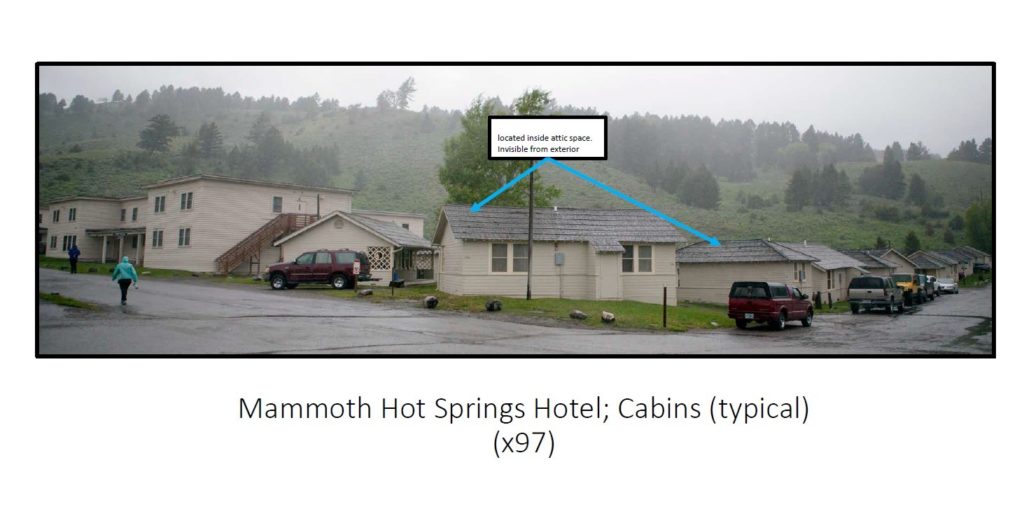
Some other facts about the proposed installation:
- No new towers would be installed under this application.
- No antennas would be installed in, nor would service be provided in, backcountry areas, park roads, campgrounds, or picnic areas.
- The new wireless equipment would only be installed on existing structures in existing developed areas.
- The Wi-Fi service area would be limited to the general footprint of each facility included in the proposal.
- This is not a 5G or cellular communications proposal. Voice communication over the internet would be available, as it is with all Wi-Fi services.
- Commercial Wi-Fi use can be considered a utility and, like other utilities on NPS lands, will be authorized using the right-of-way permit process described in Reference Manual 53. The authority to permit telecommunication antenna sites is 16 U.S.C. 5. The NPS will recover all costs associated with the application. No government funds will be expended whether the installation is approved or denied.
- All exterior antennas would be located out of view wherever possible and, if visible, the installations would be painted to match the buildings on which they are installed.
- To have no adverse effect to historic properties or districts, most (more than 75 percent) of the antennas on National Register of Historic Places eligible structures would be located in attic spaces or under eaves.
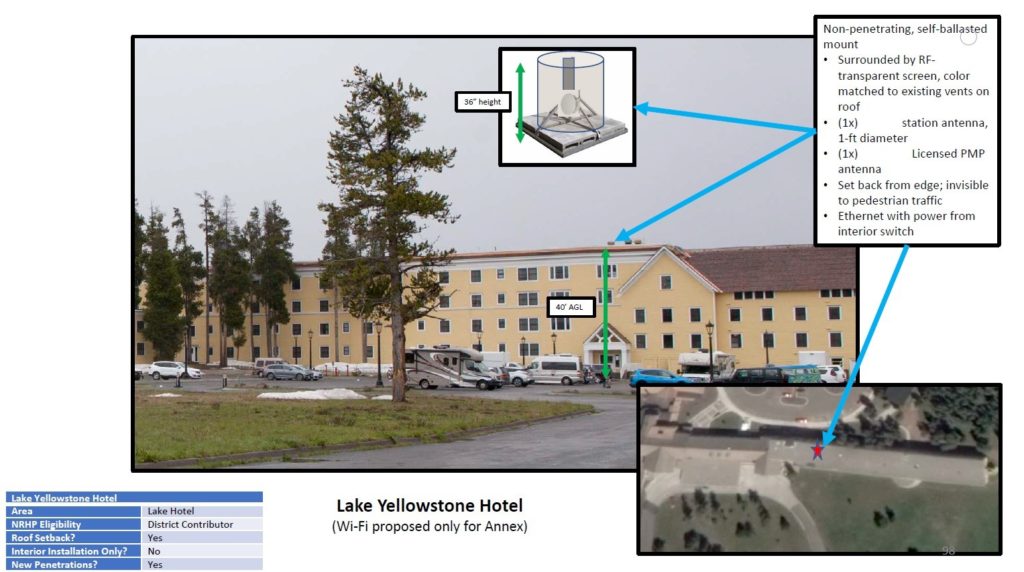
There is likely to be a lively debate over the proposal, as there was last fall. Some will argue that expanded WiFi is merely part of the modern world and it’s unrealistic to deny it to all. Other will argue that Yellowstone offers a pristine experience and provides a refuge against the modern world: today’s Yellowstone experience should be the same as it was a hundred years ago. However, the expansion of broadband at Yellowstone has been an inevitability, says Superintendent Cam Sholly, but his plan has been to implement upgrades in an unobtrusive fashion.
In an ideal world, visitors would turn off their cellphones during their Yellowstone National Park visits, preferring to commune with nature and patiently await an Old Faithful eruption or two. And, indeed, many visitors do indeed adopt this approach to a Yellowstone visit. But for others, being connected is part of everyday life. Whether it’s a family that wants to communicate with cellphones or the business professional who wants to hit the WiFi to stay connected with the office, it’s impossible to deny the inevitable.
Comments must be received by June 10, 2020. Comments may be submitted online at: https://parkplanning.nps.gov/ap, or by mail. Comments will not be accepted by fax, email, or by any other means.
Mail comments to: Compliance Office, Attention: AccessParks Broadband Proposal, P.O. Box 168, Yellowstone National Park, Wyoming 82190.
Public Comment Considerations
- Bulk comments in any format submitted on behalf of others will not be accepted.
- Before including your address, phone number, email, or other personal information, be aware that your entire comment – including your personally identifiable information – may be made public at any time. You may ask to withhold your personally identifiable information from public review, but no guarantees.
RELATED STORIES: NPS Seeking Comments on Proposed Yellowstone WiFi Installation; Yellowstone Connectivity Upgrades Inevitable: Sholly; Improved Yellowstone Cell Service On the Way, Despite Objections; Public Comment Sought on Mount Washburn Antenna Project; Additional Comment Sought on Fire Lookout Project; PEER Criticizes Yellowstone Over Cellphone Coverage
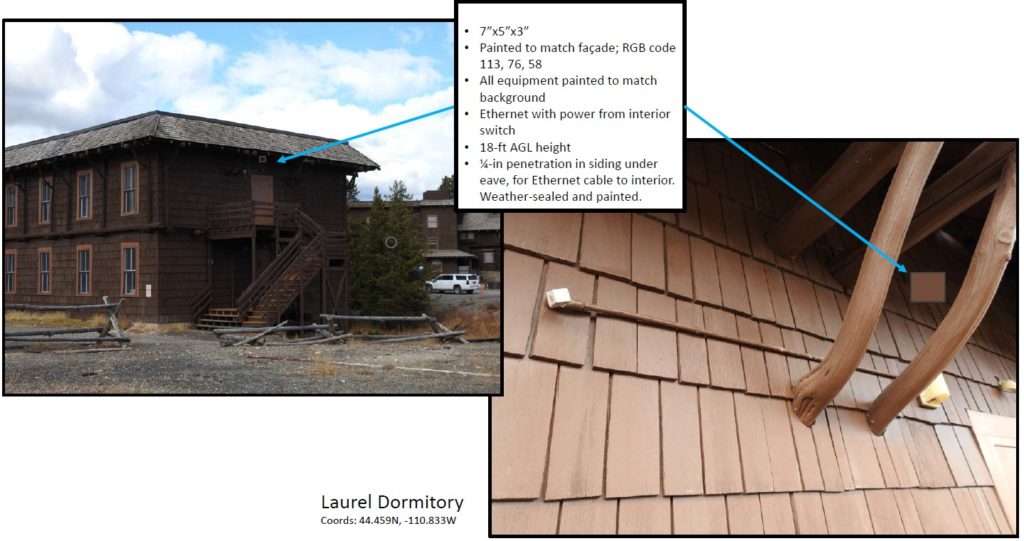
 Yellowstone Insider Your Complete Guide to America's First National Park
Yellowstone Insider Your Complete Guide to America's First National Park
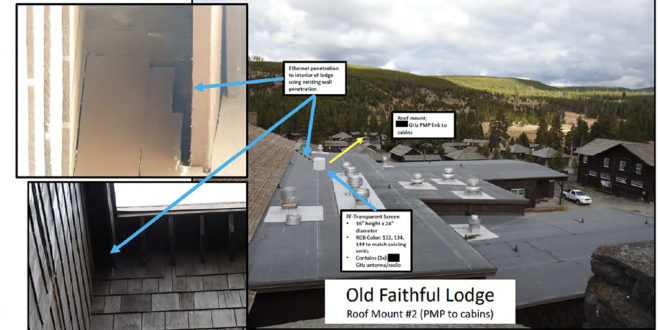

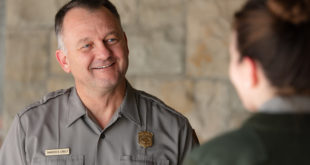
You must be logged in to post a comment.